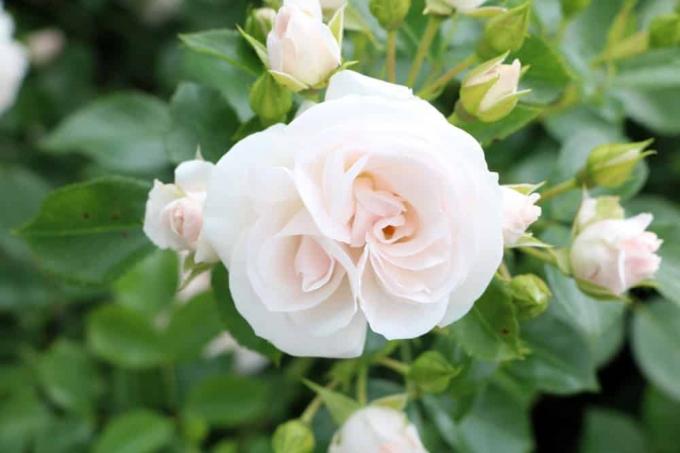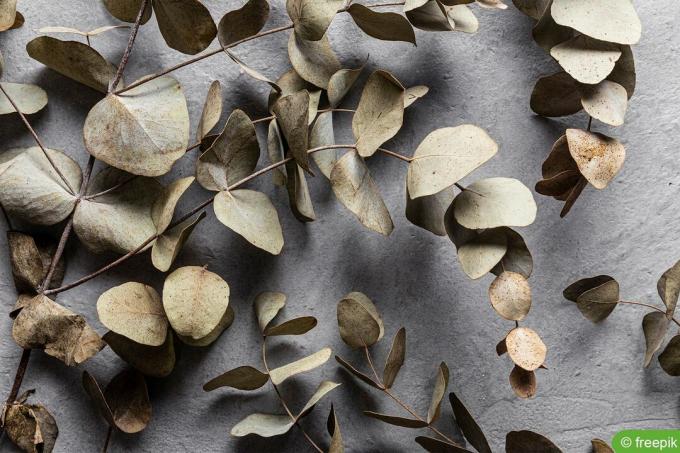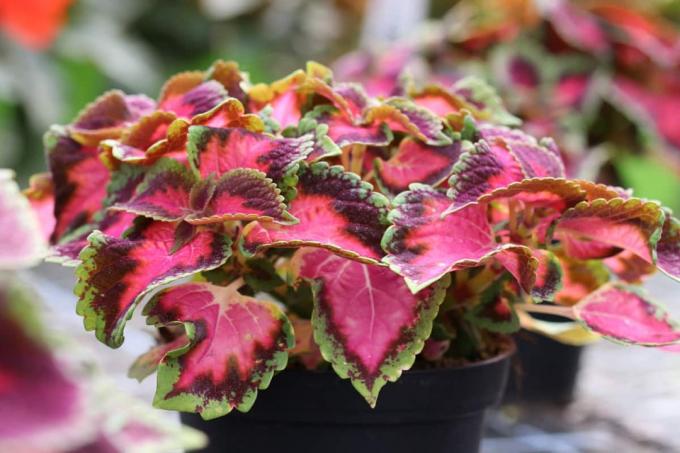

Table of contents
- Pot roses: Preparation for wintering begins in autumn
- The right winter protection
- Diet in winter
- tips
This is how you can protect your potted roses from winter and in winter:
Pot roses: Preparation for wintering begins in autumn
The pot roses should first be thoroughly examined in late summer: before they get their winter protection or go into Wandering around the house, it should be ensured that they do not have any diseases and are not infested with pests are. Because an ailing rose would not only have difficulties surviving the winter, it could with one Location in a room where several plants are gathered for overwintering, including the neighbors infect. You should therefore take precautions and, if in doubt, combat diseases and pests in good time. If that doesn't work, the potted rose can either hibernate well wrapped up in quarantine or you can decide to separate yourself from the plant now.
Before you move or pack the pots, you should consider whether it might be time for a repot, for which now is the best time. It's not just about giving the roots enough space again, but the rose is in one larger planter also much better protected from the entire root area freezing through when it there is permafrost.
The right winter protection
Depending on how strong the root system is that your pot rose has already formed, you have to be more or less vigilant: During the last warm days of late summer you should always be prepared for the first frosts to fall over the country one night pull. Then the tub roses need their winter protection immediately. You could also suffer irreparable harm from just one night unprotected outdoors.
If you can, you should give your potted roses a frost-free quarters. This can be a bright basement room or shed, or an unheated greenhouse that usually heats up sufficiently in the winter sun.
If such adjoining rooms are not available to you, you could give your potted roses a sheltered spot, e.g. B. on the wall of the house, or in a corner where they get light but are well protected from wind and weather at the same time.
In any case, you must prevent the bucket from freezing completely. The rose can then no longer draw water from the earth to feed itself. So if you put the potted roses in places where they could get frost for the winter, they need to be wrapped very well. So the pot gets good insulation, and you can be quite imaginative when installing it: If you have many Send and/or receive parcels, you certainly have enough bubble wrap in the house to make the pot really thick pack up But you can also use many other materials, e.g. B. straw mats, jute, coconut runners and much more, in which even a large bottle of hot water stays warm for a long time, if You wrap them an inch thick - this is a good test if you have doubts about whether a certain material is good isolated. The pot is therefore well packed for the time being.
The crowns must also be protected from the direct rays of the winter sun, which would cause too much water to evaporate are given decorative protective hoods made of special fleece or jute (never made of plastic, they would suffocate under it or rot). Then the whole plant must be well insulated from the ground.
If the pot is visible, you can add a little decoration, perhaps with a wicker or bark mat wrapped around the insulated vessel. You could even get really designer here and use dyed or color printed jute fabric. In this case, however, you should know for sure that only harmless colors were used. Finally, the pot can be tied up with decorative ribbons, it then looks a bit like what it is: A gift for next spring!
However, this is not the case for your rose - it is by no means idle, but uses the winter to let newly attached branches mature and its whole plant framework to stabilize until it "must bring production" again in the spring. Therefore, the ideal temperature for hibernation is around 8 degrees. Under these conditions, the rose slows down its metabolism, but does not completely stop all cell activity.
Diet in winter

Container plants are prepared for winter with a dose of a special autumn fertilizer. This is a fertilizer that is very high in potassium, since it is potash that the plant needs during its dormant period. It strengthens the cells and makes the rose resilient. Nitrogen (especially growth-promoting) and phosphorus (especially important for flowers and fruits) should only be present in traces. They are only required in very small quantities by the plant during the rest period. With this fertilizer the rose will last the whole winter.
Your potted roses need regular watering, even in winter. They need to be watered less than in summer! It is best to simply note when the surface of the soil in the pot becomes dry, then you can water it a little again. Waterlogging would be a bad thing now, because fungi spread best when there is moisture - you would therefore have to make sure that every pot is equipped with a drain and this too is permeable.
tips
To the Overwintering of pot roses without major packaging work, any room that is bright and in which the temperature never falls below 5 degrees in winter and never rises above 10 degrees is suitable.
Since the winter-safe packaging of the roses is a lot of effort, it's worth it mentally going through all the spaces in the area for their suitability - not necessarily just your own rooms. Maybe the neighboring sports club would be happy to provide you with a part of the hardly used storage room for your Potted plants are available if you put a few bucks in the coffee fund and you've got a lot of work to do saved up.
If no space can be found, but you have neither the desire nor the time for a packaging campaign, you can also contact the nearest nursery. They'll be happy to take your plants over the winter for a fee, and you'll usually be delighted at how gorgeous your roses look when you pick them up in the spring!
 garden editorial
garden editorial I write about everything that interests me in my garden.
Learn more about overwintering plants

Eucalyptus dries up during the winter: what to do?
Eucalyptus in tubs spends the winter best in a frost-protected place in the house. It is not uncommon for the beautiful eucalyptus plants to dry up during the winter. We show what you can do about it.

Is bamboo hardy? Hibernate bamboo correctly
A bamboo can undoubtedly enrich any garden. But can it survive winter temperatures in good health? There is no general answer. It depends on the species and what winter protection it gets.

Is the colored nettle hardy? 6 tips for wintering
Summer is the season when the colors of these ornamental foliage plants are at their most intense. Most of the leaves are multicolored, with different drawings, wavy or heavily slit edges.

Is Camellia japonica hardy? Overwinter camellia properly
Anyone who sees a blooming camellia for the first time will definitely be amazed. The attractive plant, which came to Central Europe from Japan and Korea, has taken the hearts of hobby gardeners by storm. It is usually cultivated in tubs. Is she hardy?

Is the magic flower hardy? | Overwinter Mirabilis jalapa
The Japanese miracle flower (Mirabilis jalapa) delights its viewers with its bright and colorful flowers from June to October. It carries up to five different colored flowers on one and the same plant. Even a single flower can be multicolored.

Is rhododendron hardy? 6 tips for wintering
Overwintering rhododendrons: With these 6 tips you can get the azaleas through the winter safely!
